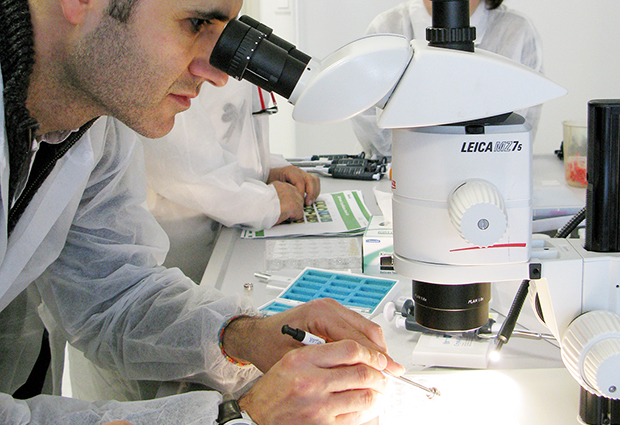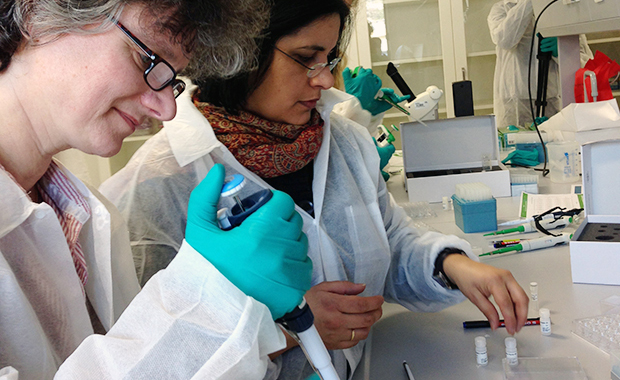
Shining light onto the fabric of life
For its first LearningLAB of 2015, EMBL’s European Learning Laboratory for the Life Sciences (ELLS) made the science of protein structure crystal clear for a group of 22 science teachers from all over Europe. The two-day event held in Grenoble was set up in partnership with the EU-funded project FluPharm. It gave the participants a 360° view of how crystallography can deepen our understanding of the relationship between the structure and function of biological molecules, and lead scientists towards innovative treatments against diseases.

Before the course, most participants associated crystallography mainly with the 3D structure of DNA, which is now more than 60 years old – that left a lot of space to elaborate on the modern aspects of the technique and its application in research, with a special focus on the recent discovery of the structure of the flu virus polymerase.
The programme was a mix of hands-on workshops and talks by EMBL scientists. The visiting teachers learned how to grow crystals from lysozyme – a protein contained in chicken egg white – and how to replicate this experiment in the classroom using an experimental kit. They then went on to visit the protein-expression and high-throughput crystallisation facilities at EMBL Grenoble, and the X-ray beamlines operated by EMBL at the European Synchrotron Radiation Facility (ESRF).

The course was enriched by presentations by speakers Kanchan Anand, a visiting scientist at EMBL Heidelberg, and Oliver Szolar, CEO of Savira, a startup co-founded by EMBL. They provided participants with solid background information on protein X-ray crystallography and structure-based drug design for the development of next-generation influenza therapeutics, such as those being developed by the FluPharm project. “I really enjoyed giving this presentation,” smiles Szolar. “Small start-ups likes Savira owe a lot to science teachers who motivate their pupils to become researchers: this was a nice way to give something back.”
Small start-ups owe a lot to science teachers who motivate their pupils to become researchers
The participants were no less enthusiastic, and grateful to gain valuable and practical knowledge they could use in the classrooms. “Beyond the very friendly and curiosity-driven atmosphere, doing a crystallisation experiment on the bench and then observing how it is done in labs was really interesting,” explains one of the teachers. “The presentations were also very enlightening and inspiring.”
On one evening, the group visited the ‘Fab Lab’ at Grenoble’s science centre, La Casemate. There, they were introduced to a new generation of manufacturing methods, including 3D printers, laser cutters and other modern devices. All the participants left with a printed model of the influenza neuraminidase protein, a drug target for antiviral drugs.
Following the LearningLAB, the teachers are encouraged to build on their newly gained knowledge, and on the existing ELLS teaching resources, to design their own classroom crystallography activities. After some refinement by the ELLS team, these resources can be shared on the ELLS online platform.


